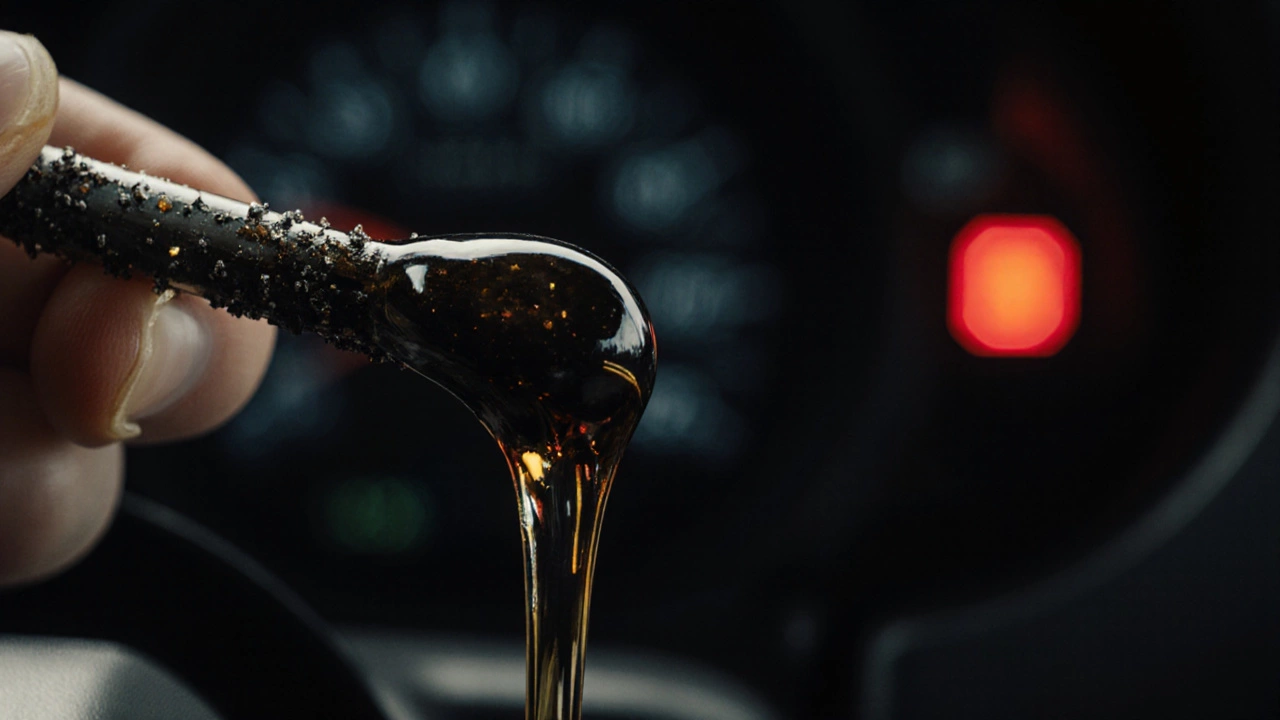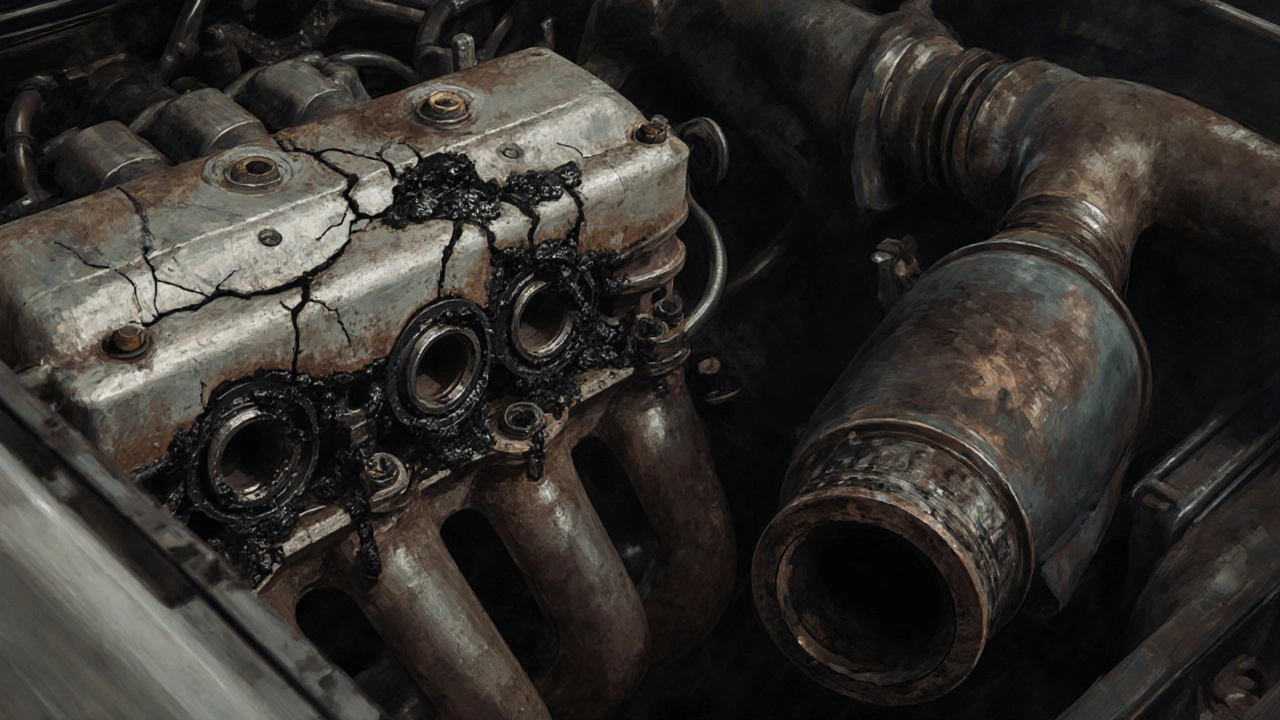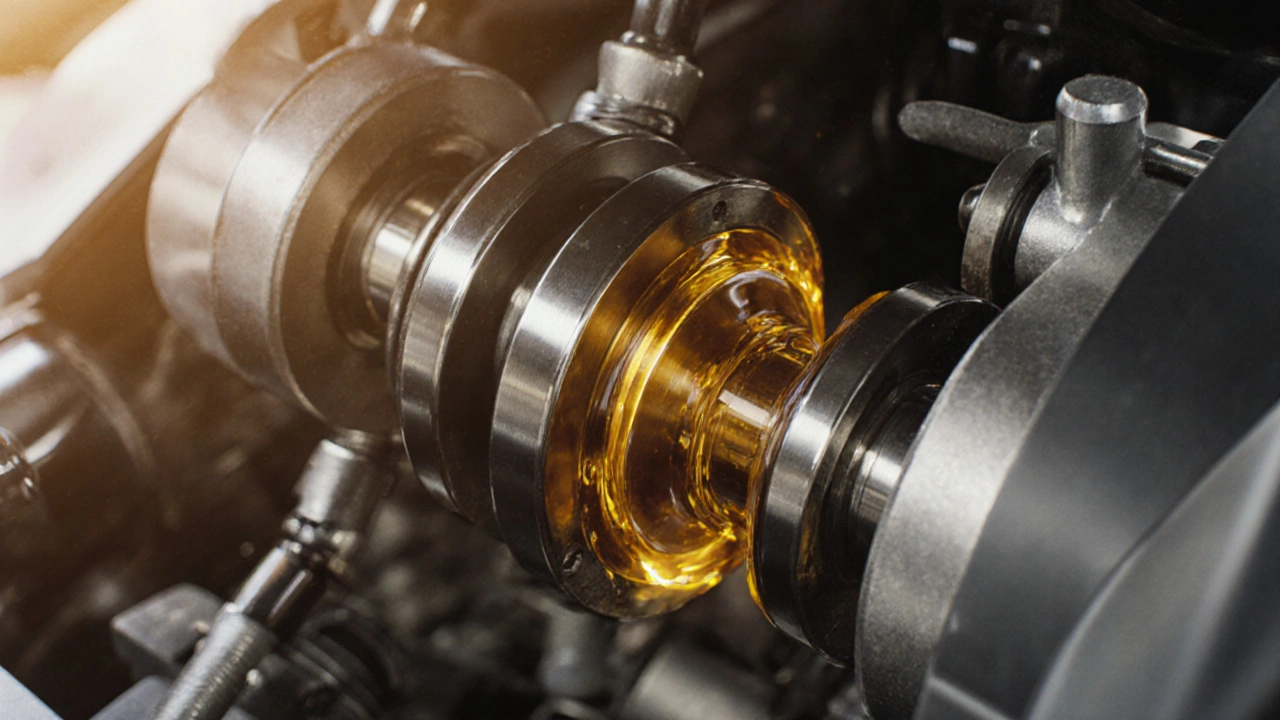Engine Oil Change Calculator
Key Takeaways
- Missing an oil change reduces lubrication, leading to higher friction and heat.
- Within weeks you may see dark, gritty oil and lower oil pressure.
- Over months, sludge builds up, bearings wear out, and the catalytic converter can fail.
- Repair costs can jump from a few hundred pounds for a filter change to thousands for a rebuilt engine.
- Sticking to the manufacturer’s oil‑change interval and checking oil level regularly prevents the majority of problems.
Skipping a regular engine oil change might seem harmless, but the consequences can range from a noisy engine to a complete failure.
Why Engine Oil Matters
When you hear the term engine oil is the lubricant that circulates inside a car's engine to reduce friction, carry heat away from moving parts, and keep contaminants suspended until they can be filtered out. Without its protective film, metal parts slam together, temperatures spike, and the engine’s life expectancy drops dramatically.
Short‑Term Effects (First Few Weeks)
Even a single missed change can show up quickly:
- Oil becomes darker and thicker as it picks up dust and metal particles.
- Oil pressure warning lights may flicker because the pump struggles to push degraded oil.
- Engine noise increases - you might hear a faint ticking or knocking.
These signs are the car’s way of saying the lubricant is losing its ability to protect moving components.

Long‑Term Damage
Letting the problem linger turns early warning signs into serious mechanical failures.
Engine Wear and Bearing Failure
The engine the heart of the vehicle where combustion converts fuel into motion, relying on precisely machined moving parts contains crankshaft and camshaft bearings that spin at high speeds. When oil viscosity drops or becomes contaminated, these bearings experience excessive wear, eventually leading to scored surfaces and loss of oil pressure.
Sludge Buildup
Old oil breaks down into a gummy substance called sludge a thick, carbon‑rich deposit that clogs oil passages and adheres to internal surfaces. Sludge restricts flow, causing hot spots and increasing the risk of a seized engine.
Oil Filter Overload
The oil filter a replaceable element that traps particles and prevents them from circulating through the engine works harder when oil is dirty. A saturated filter can restrict flow, amplifying pressure loss and heat buildup.
Catalytic Converter Damage
When oil burns off due to overheating, it can clog the catalytic converter the emissions component that converts harmful gases into less toxic substances. A fouled converter reduces engine efficiency and may trigger an emission‑test failure.
Fuel Economy & Emissions
Thick, degraded oil forces the engine to work harder, which can lower fuel efficiency by up to 5% and increase CO₂ output. Over time, you’ll notice more frequent stops at the pump.
Cost Impact of Skipping Oil Changes
| Aspect | Short‑Term (1‑3 months) | Long‑Term (6‑12+ months) |
|---|---|---|
| Typical Repair | Oil & filter change (£70‑£100) | Engine rebuild or replacement (£2,000‑£5,000) |
| Fuel Penalty | ~2% extra fuel cost | ~5‑7% extra fuel cost |
| Downtime | Few hours at the garage | Days to weeks for major engine work |
How to Spot Problems Early
- Check oil level and condition every month using the dipstick - fresh oil should be amber and clear.
- Watch for oil pressure warning lights; a sudden illumination means pressure is below safe limits.
- Listen for unusual engine noises - ticking, knocking, or grinding often signal bearing wear.
- Notice any increase in exhaust smoke, especially blue‑tinged smoke that indicates oil burning.
- Monitor fuel consumption; a sudden rise can be a symptom of thick oil.

Preventive Steps and the Right Oil Change Interval
The oil‑change interval the recommended mileage or time period between each oil replacement, usually specified by the vehicle manufacturer varies by engine design and oil type. Modern synthetic oils often allow 10,000‑15,000km, while conventional oils may need changing every 5,000km.
Key tips:
- Follow the manufacturer’s schedule found in the owner’s manual.
- Choose the correct viscosity the oil’s resistance to flow, indicated by numbers such as 5W‑30 for your climate and engine type.
- Replace the oil filter at every oil change to keep flow unrestricted.
- Keep an eye on the oil’s color and smell - a burnt odor signals overheating.
- Use a trusted service centre or follow a reliable DIY guide if you change the oil yourself.
Quick Maintenance Checklist
- Check oil level and condition before long trips.
- Replace oil and filter at the recommended interval.
- Inspect the oil pressure sensor and gauge for faults.
- Record mileage and date of each oil change in a logbook.
- Schedule a professional inspection if you notice any warning signs.
Frequently Asked Questions
How often should I change my engine oil?
Most manufacturers recommend every 5,000‑7,500km for conventional oil and up to 15,000km for high‑quality synthetics. Always check your owner’s manual for the exact interval.
Can I use the same oil type year after year?
Yes, as long as the oil meets the specifications (viscosity, API/ACEA rating) required for your engine. However, oil chemistry can degrade, so regular changes are still necessary.
What does dark, gritty oil indicate?
It means the oil has collected contaminants and is breaking down. This is a sign you should change the oil immediately.
Will a missed oil change void my warranty?
If the manufacturer’s service schedule is ignored and damage occurs, the warranty could be contested. Keeping records of all oil changes helps protect your warranty.
Is synthetic oil always better than conventional?
Synthetic oil offers better temperature stability and longer intervals, but it’s more expensive. For most modern cars, the benefits outweigh the cost.




